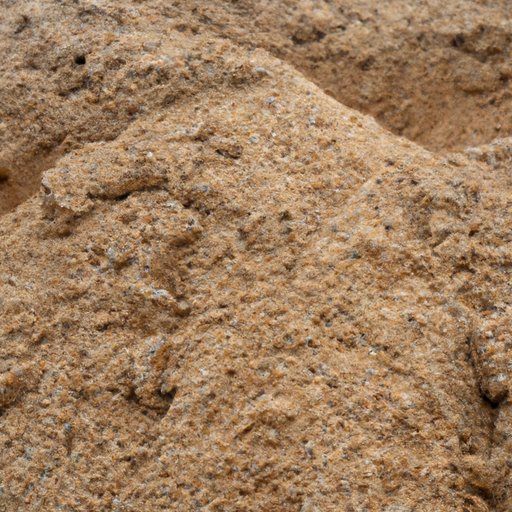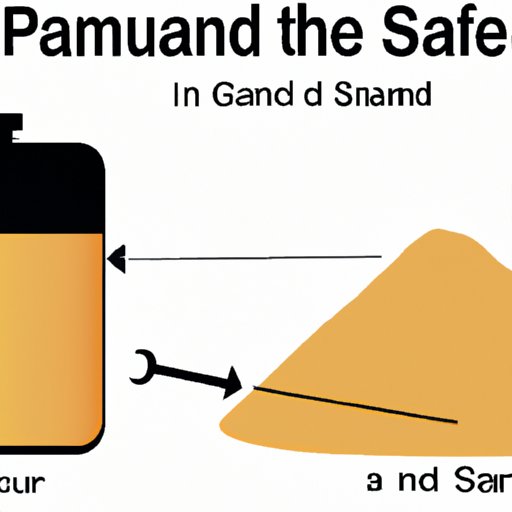
Introduction
Have you ever wondered how much a gallon of sand weighs? While it may seem like a trivial question, knowing the weight of sand can be crucial in a variety of situations, from construction to landscaping. In this article, we will explore the factors that influence the weight of a gallon of sand, explain how to calculate it, and discuss its importance in different industries.
How to Calculate the Weight of a Gallon of Sand
The weight of a gallon of sand can vary depending on its composition and moisture content. However, a general rule of thumb is that dry sand weighs approximately 100 pounds per cubic foot or 1,600 kg per cubic meter. To calculate the weight of a gallon of sand, you would need to measure its volume and weight.
You can measure the volume of sand using a gallon container. Once you have measured the volume, multiply it by the weight per cubic foot to determine the weight per gallon. For example, if a gallon of sand fills a container that measures 0.133 cubic feet, the weight of the sand would be 13.3 pounds (0.133 x 100).
The Importance of Measuring Sand by Weight instead of Volume
Measuring sand by volume, such as using a bucket or shovel, can lead to inaccurate measurements due to factors like settling and air pockets. In addition, sand can have varying densities and moisture contents, which can affect its weight.
By measuring sand by weight, you can ensure that you are using the correct amount for your project. It can also help you avoid over-spending on sand, as you can purchase the exact amount you need.
Are You Overpaying for Sand? Learn the Weight of a Gallon
By understanding the weight of sand, you can avoid overpaying for it. Suppliers may charge by the ton or cubic yard, but if you know the weight per gallon, you can calculate how much sand you need and how much it should cost.
It’s also essential to keep in mind that different types of sand can have different weights. For instance, fine sand will generally weigh less than coarse sand due to its lower density. Therefore, knowing the weight of a gallon of sand can help you choose the right type for your project.

The Physics Behind Determining the Weight of Sand per Gallon
The weight of sand can be explained by the fundamental physics principles of density and mass. Density measures the amount of material in a given space, while mass is the amount of matter in an object.
When sand particles are packed tightly together, the sand is denser and therefore weighs more per volume. Conversely, when the sand particles are loosely packed, the sand is less dense and weighs less per volume.
Why the Weight of a Gallon of Sand Matters for Construction and Landscaping
The weight of sand is essential in construction and landscaping projects. For instance, if you are building a concrete wall, the weight of the sand used to mix the cement will affect the wall’s structural integrity. Similarly, if you are installing pavers on your patio, using the wrong weight of sand can lead to uneven surfaces and shifting pavers.
By measuring the weight of sand per gallon accurately, you can ensure that your projects are built with the correct materials and will stand the test of time.
The Relationship Between Moisture and the Weight of Sand per Gallon
Moisture can significantly affect the weight of sand. Sand that contains moisture or is damp will weigh more than dry sand due to the water weight. On the other hand, sand that is overly dry and desiccated may weigh less than expected.
To get accurate measurements, it’s best to work with dry sand. However, if you must work with moist sand, you can use a moisture meter to determine the amount of water in the sand and calculate the weight accordingly.
Comparing the Weight of a Gallon of Sand to Other Common Materials
Sand is a relatively lightweight material compared to other common construction materials. For example, a gallon of water weighs approximately 8.34 pounds, while a gallon of gravel can weigh between 15 and 19 pounds, depending on its size and density.
However, other materials such as concrete can be significantly heavier, with a gallon of concrete weighing approximately 22 pounds. By understanding how the weight of sand compares to other materials, you can choose the right materials for your project and ensure that you have the proper equipment and resources needed to transport and handle them.
Conclusion
The weight of a gallon of sand can vary significantly depending on its composition, moisture content, and volume. By measuring sand by weight instead of volume, you can ensure the accuracy of your project and save money by avoiding over-purchasing. It’s also crucial to understand how the weight of sand can impact construction and landscaping projects and how it compares to other materials. By considering all these factors, you can make informed decisions about how much sand you need and how to use it for your project.




